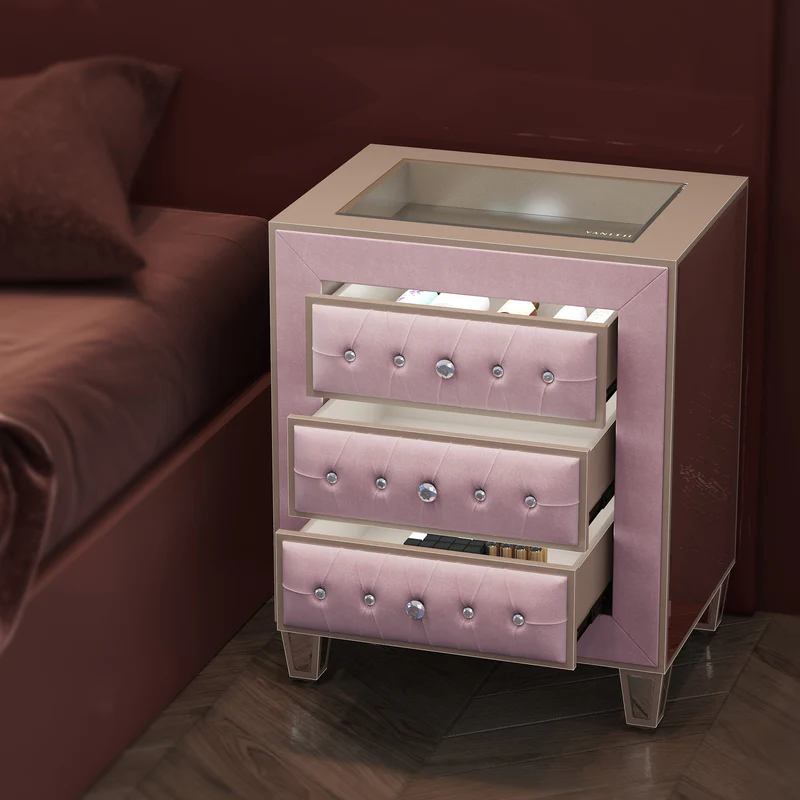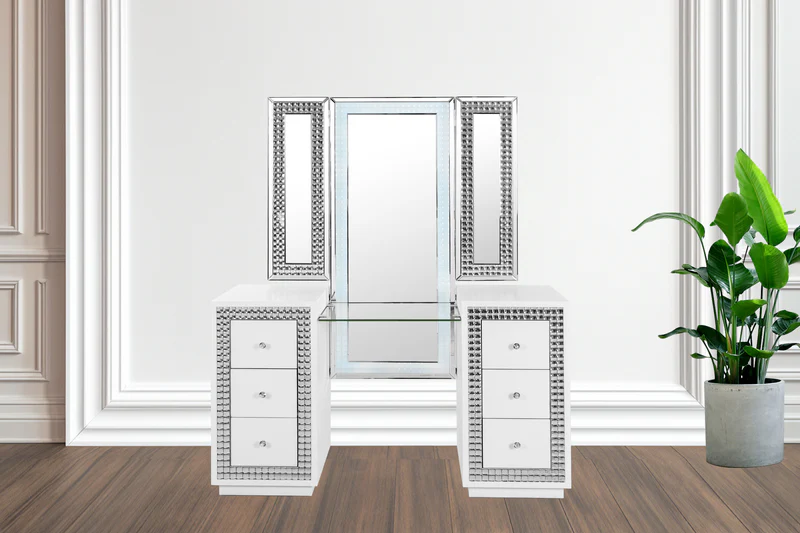Bedside tables are essential parts of a bedroom, holding your nightly items and sitting next to your bed. Knowing basic rules for bedside tables can improve your space. We'll look at height, width, style, and storage to help you choose tables that work well and look good.
Height Considerations for Bedside Tables
The height of your bedside table plays a key role in both comfort and style. A well-chosen height enhances your bedroom's functionality and appearance.
Matching Table Height to Your Mattress
The top of the table should be about even with or slightly higher than your mattress. For standard beds, tables between 24–28 inches work well. Adjust according to your bed height.
Comfortable Reaching Distance
Choose a height that allows you to reach items without awkward stretching. Side sleepers may prefer slightly taller tables, while back sleepers might like lower ones.
Adjusting for Bed Height Differences
Low beds need shorter tables, high beds taller ones. Risers can adjust standard tables if needed.

Width and Depth Guidelines for Bedside Tables
20–24 Inches Wide, 16–18 Inches Deep
Tables about two-thirds the width of your mattress fit well. Depth of 16–18 inches provides space for essentials without overcrowding.
24 Inches of Walking Space
Ensure enough space around the table for walking. A good rule: leave at least 24 inches between the bed and other furniture.
12-Inch Deep Tables or Wall-Mounted Options
In tight spaces, consider narrower tables or wall-mounted shelves/floating nightstands. Using a single table instead of two can also help in small rooms.
Placement Rules for Bedside Tables
2–3 Inches from the Bed
Keep tables close for easy reach, adjusting slightly for large headboards or footboards.
Equal Distance on Both Sides
For two tables, symmetry creates balance. For asymmetrical setups, maintain visual balance using similar height or weight.
Aligned with Bed Frame or Window
Align tables with bed frame edges or window frames for cohesion. Adjust creatively in asymmetrical rooms to balance visual weight.

Storage and Organization for Bedside Tables
Drawers for Privacy, Open Shelves for Display
Drawers hide clutter; open shelves display items. Combination tables offer both benefits.
Top Drawer for Daily Items, Bottom for Less-Used Objects
Organize daily essentials in top drawers; use lower drawers for less-used items. Drawer dividers keep things tidy.
Built-in USB Ports and Cable Holes
Tables with USB ports, wireless charging, or cable holes reduce clutter. Cable clips keep wires organized.
Lighting Integration for Bedside Tables
Table Lamps: 24–27 Inches Tall
Provide good reading light; choose lampshade 12–14 inches diameter for balance.
Wall-Mounted Sconces: 60–66 Inches from Floor
Save tabletop space; adjustable arms allow directional lighting.
Built-in LEDs: Dimmable and Color-Changing
Modern tables may have LED strips for ambient light, adjustable brightness, and color.

Symmetry vs. Asymmetry in Bedside Table Arrangements
Matching Pairs: Same Height and Style
For a tidy look, use matching tables on both sides, same height, similar lamps.
Mismatched Tables: Close in Height, Complementary Style
Use different tables close in height (within 2–3 inches), matching color or style.
Single Table: In the Middle or to One Side
Single tables can go centered or to one side. Ensure size is proportionate (24–30 inches wide).
Special Considerations for Bedside Tables
Single Beds: One Table, 15–20 Inches Wide
Compact tables provide enough essentials without overcrowding.
King Beds: Larger Tables, 24–28 Inches Wide
Bigger beds require wider tables; leave at least 30 inches of walking space around the bed.
L-Shaped Rooms: Corner Table Solution
Use corner tables or round tables to fit room shape. Adjust placement to maintain flow.
Shared Bedrooms: Personal Space for Each Person
Provide individual tables; match style for cohesive look.
Make Your Bedroom Better with Great Bedside Tables!
Use these guidelines to choose bedside tables that suit your space and needs. Consider height, style, storage, and lighting. The right bedside tables improve organization, comfort, and bedroom aesthetics.




Leave a comment
This site is protected by hCaptcha and the hCaptcha Privacy Policy and Terms of Service apply.